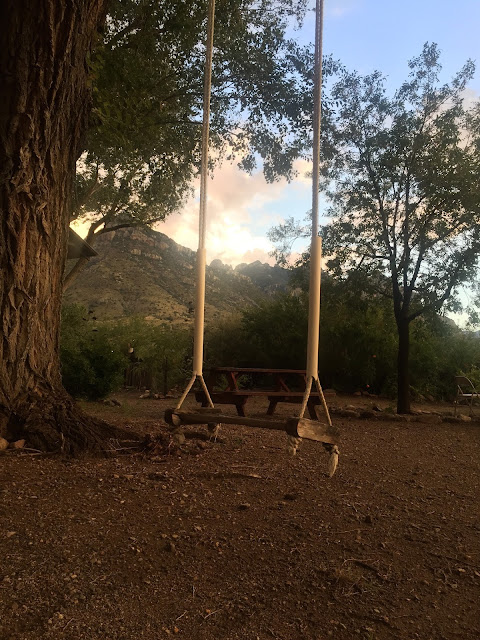I
won’t know how it turns out until January next year when I do my first read
through of my NaNo novel, but I’m excited about the possibilities, so I thought
I’d share some things I’m doing differently in no particular order.
1. Keeping a scene list. James Scott Bell
recommends taking some time at the end of every writing session to take notes
on scenes. This is one of the most time
consuming parts of revising for me, and though I think there’s some benefit to
rereading a novel to create this list, this year I’m going to create my scene
list as I go. I haven’t decided on
format yet, but at a minimum, my scene list (written on index cards) will
include characters, objectives, setting, and obstacles.
I’m
hoping this list will help me when I go back in to look at the structure of the
book during revision. Time will tell.
2. Imagining alternatives. James Scott Bell suggests stopping every once
in a while during drafting to think
about the ten worst things that might happen to the character next. Then, you choose the worst things and make
them happen.
Because
I love my characters, I don’t like to see bad things happen to them, but my
favorite writer, Kate DiCamillo, always makes her characters go through
heartbreaking things, and her books are more satisfying because of it. So, this year, my goal is to let my
characters suffer. Imagining the worst
things that can happen to them at several points in the novel should help me
increase their suffering.
Aaack,
I’m having a hard time just thinking of this.
Deep breaths. Okay, I will let my
characters suffer. I will let my
characters suffer. I will.
3. Music.
Bell suggests listening to movie theme music that matches the purpose of
your scenes. So I’ll waster, er, spend
time this weekend downloading some movie tracks for drama (The Mission), hope,
terror, despair, avenging, etc. And then
I’ll have something to listen to when I’m writing the novel. I’m very influenced by music, and can’t
listen to words while I’m writing, so this sound track ideal seems
promising. I’ll let you know how it
goes.
4. Jump start.
Again, it’s Bell who recommends writing 350 words before you do anything
each day. Getting 1/5 of my daily word
count goal down in the morning while I drink my coffee seems like a useful tool
for priming the pump each day. I’ll try
to apply another trick that works for me, walking away in the middle of
sentence, so that it’s easier to come back and sit down to work. And, of course, if I get twice that amount
written in the morning (like I have this morning) then that’s even better.
5.
Character letters. I often have
detailed character descriptions before I begin work each NaNo, but though I’ve
done some work, another idea I’m borrowing from the prolific Mr. Bell. He suggests stopping at points along the
novel’s way and writing letters in the voice of your characters. Ask them what’s missing in their lives? As
them what they really want? Ask them
about their actions and motivations. I
like that this practice also helps build the voice of characters, voice that
will show up in first person narration and dialogue. Besides, it’s much more interesting than a
fill-in-the-blank character sheet.
Bonus
Task 6. I’m including this here not as a
suggestion, but because I think I’ll be referring to it as we go through the
month. This year, I’ve mapped out the
major beats and listed some key scenes.
Using Blake Snyder’s Save the Cat and James Scott Bell’s Super
Structure, I’ve come up with a fifteen point outline of this years NaNo
novel. It covers the big events and also
has space for scene lists during the dreaded middle. If you don’t know what beats are, don’t
worry, it’s really just a list of the major plot events that will take place in
my book. It identifies the novel’s
theme and then takes a look at how that theme will guide the character through
the three acts of the story.
There’s
still plenty of room for pantsing in here, but I’m hopping this big picture
view of the book will help me make it through a very busy November. If you’re free this weekend and this sounds
appealing, read Super Structure (details below) and outline as you read. If you’re reading this on Monday, don’t worry.
Pants away. You can go back and
apply these techniques to your novel during revision.
I
hope you’re visualizing yourself working each day, picturing the words filling
up your documents, and picturing yourself raising your hands in victory as you
finish that 50,000 word.
Many
of these ideas won’t work for you, but take what you need and leave the
rest. Most of all, get ready to enjoy
your words and the world you make in NaNo this November.
Source
List: AN IMPORTANT REMINDER Now is not the time to read these books
unless you want to choose one to read over the weekend (Super Structure would
be great). But put these on a list for
next year. These books will give the
critical part of your brain a work out.
All you need to do now is take some deep breaths, do some warm ups
(character letters anyone), and get ready to write.
Bell,
James Scott. Just Write. Writer’s Digest Books. 2016.
Bell,
James Scott. Super Structure. Compendium
Press. 2015.
Bell,
James Scott. Plot and Structure. Writer’s Digest Books. 2004.
Brooks,
Larry. Story Fix. Writer’s Digest Books. 2015.
Brooks,
Larry. Story Engineering. Writer’s Digest Books. 2011.
Snyder
Blake. Save the Cat Strikes Back.
Michael Wiese Productions. 2009.
Snyder,
Blake. Save the Cat. Michael Wiese Productions. 2005.









